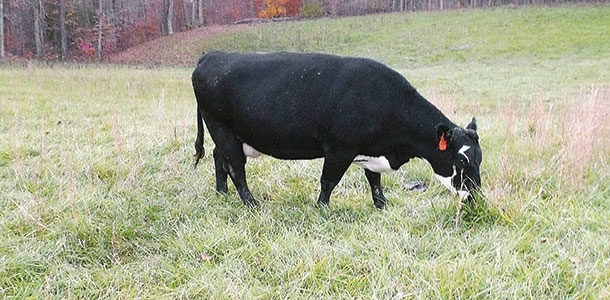Stockpiling means to make the last harvest by clipping or grazing a hayfield or pasture and then letting it grow for grazing later – in this situation, in the fall or winter.
While most predominantly cool-season grass-based fields will work, fescue works the best, as it maintains quality into and throughout the winter better. Many studies have demonstrated that one way to improve the quality and yield is to apply nitrogen (N) when stockpiling is initiated.
Urea is the most common form of N used for stockpiling in most areas, but the biggest risk is applying the urea and then not getting a rain, allowing much of the nitrogen to be lost by evaporating (volatilizing) in warm, dry conditions before it has a chance to react with the soil.
One product available to reduce nitrogen loss is a urease inhibitor. Several universities have done research on urease inhibitors, and the University of Kentucky has an excellent factsheet on nitrogen inhibitors (Nitrogen transformation inhibitors and controlled release urea).
In southeast Ohio, studies and demonstrations have been conducted to evaluate quality and quantity of stockpiling cool-season grasses such as fescue with no nitrogen (N), 100 pounds of urea (46 pounds N) and 100 pounds of urea with Agrotain (a urease inhibitor) at a rate of 4 quarts of the product applied per ton of urea.
There are lower rates that can be used, but we chose the high rate, which would provide up to 14 days of protection.
 Stockpiling began on Aug. 8, 2014, for the replicated plots with the fescue clipped to 6 inches and the treatments applied. On Aug. 11, the site received over half an inch of rainfall (0.59 inches), with more on Aug. 12 (0.56 inches).
Stockpiling began on Aug. 8, 2014, for the replicated plots with the fescue clipped to 6 inches and the treatments applied. On Aug. 11, the site received over half an inch of rainfall (0.59 inches), with more on Aug. 12 (0.56 inches).
Previous research indicated that half an inch of rainfall within 48 hours of application would help prevent the urea from volatizing back into the atmosphere, and in this trial rainfall was received within 72 hours of application.
Plots were harvested on Dec. 3, 2014, with yields averaging 2,369 pounds dry matter (DM) per acre for the plots with no N, 3,147 pounds DM per acre for plots with 100 pounds of urea and 3,210 pounds DM per acre for the plots with 100 pounds of urea with Agrotain.
While there is no significant difference in the treatments (P greater than 0.05), there was a trend (P greater than 0.1) of higher yields with the treatments.
There was a significant difference (P greater than 0.05) in crude protein (CP) with urea and urea with Agrotain. CP averaged 6.77 percent for the plots with no urea, 8.53 percent for the plots with 100 pounds urea per acre and 8.32 percent for the plots with urea and Agrotain. This and other studies confirm that urea, and urea with Agrotain, improves yield and quality.
What happens if we go for a longer period of time with no rainfall? One of the biggest problems with using urea to stockpile cool-season grasses is the uncertainty of a timely, adequate rain in the late summer.
In the study I just discussed, we had rain within 72 hours, but in 2013 we began stockpiling on Aug. 5 and there was not a soaking rain for 17 days (there were three days of 0.05 to 0.15 inches rain), and then there was 1.5 inches of rain on Aug. 22. On Oct. 14, samples were harvested from one set of plots, and the plot with no N had 2,003 pounds DM per acre, the 46 pounds of N had 2904 pounds of DM per acre, and the 46 pounds of N with Agrotain had 4,141 pounds of DM per acre.
Unfortunately, cattle broke through the fence and cleaned up the plots before we could make a final harvest of the plots. However, the one set of results indicated a higher yield for the plots with urea and Agrotain compared with urea alone and no urea.
So what do I recommend? As a farmer and an extension educator, I recommend stockpiling cool-season grasses to reduce our need for stored forages. In many cases, it is higher-quality than the hay we make. I also recommend adding nitrogen, approximately 50 pounds per acre when stockpiling is initiated.
Finally, if there is any doubt about rainfall after applying urea, a urease inhibitor such as Agrotain is a good option. Several cattle producers in our area have tried it with success, and research from University of Kentucky confirms it improves yields. FG
PHOTOS
Ohio State University study showed that urea, and urea with a urease inhibitor, improved stockpiled fescue yield and quality. Photos courtesy of Chris Penrose.

- Chris Penrose
- OSU Extension Educator
- Agriculture & Natural Resources Morgan County











